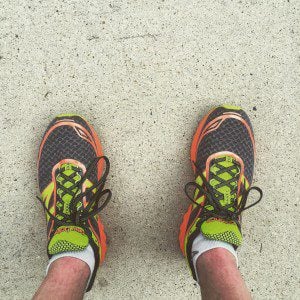One way of classifying the various methods of self-improvement that one can pursue is to divide the different paths into four major categories: body, mind, spirit, and shadow. As I list some examples, drawn from a book titled Integral Life Practice, I invite you to consider where your proclivities lie, and how your attraction to practices in one or more of these categories may have shifted over time.
If left to my own devices, I’m most naturally drawn to practices around the mind: “reading and study,

discussion and debate, writing and journaling, pursing a degree.” Additionally, my childhood experience of being raised in a conservative Christian tradition helped cultivate my appreciation for practices related to the spirit: “meditation, prayer, spiritual community, worship, song, and chant.” The more educated I became, the more exposure I had to what are sometimes called “shadow” practices, following psychologist Carl Jung’s term for our unconscious: dream work, journaling, psychotherapy, art, music, and dance” (21).
There are other potential categories as well such as ethics, vocation, relationships, and creativity. But turning for now to our theme of embodied spirituality, the fourth major category of “body practices” include: “strength training, aerobic exercise, balanced diet, yoga, martial arts, sports and dance” (21). And as I’ve pressed to higher and higher levels of practices of the mind (earning a doctoral degree, writing a dissertation, working on publishing a book, writing sermons and blog posts), I’ve found that to keep myself balanced, I have had to become increasingly intentional about carving out time for body, spirit, and shadow practices. And as you reflect on where you find yourself in this season of your life, what set practices might be most helpful to you: body, mind, spirit, shadow, or some combination.
I should add as well that many spiritual teachers make an important distinction between the “gross body” and the “subtle body.” Not “gross body” as in ‘disgusting.’ Rather, gross as in ‘gross anatomy,” “the structure of organs and tissues that are visible to the naked eye.” According to many spiritual traditions, we have both a gross body visible to the naked eye (“flesh and bones, organs and cells, saliva and blood”) and a subtle body “of various kinds of energy, sometimes called chi or prana,” which are related to the “chakras and acupuncture meridians” (128). And just as we can strengthen our gross body through practices like “weightlifting, running, aerobics, sports, and dance,” we can become more aware of our subtle body through practices such as “yoga, Tai Chi, Quigong, Breath Practice, Visualization, and Lucid Dreaming” (133-134).
Periodically over the last decade and more, I’ve benefited from doing quite a bit of yoga — as well as some Quigong. To focus in particular on yoga, part of what I appreciate is the way yoga gets me out of my head and into my body. It is also a great counterbalance to my running routine, and can help prevent injuries by increasing flexibility.
Given my bent toward mind-related practice, part of moving deeper into yoga for me was not only practicing yoga more, but also researching the yogic tradition. And one of the most interesting books I discovered is The Science of Yoga: The Risks and the Rewards published a few years ago by The New York Times journalist William Broad, who has been a yoga practitioner for more than four decades.
I discovered his book through three related articles he published in the Times in recent years:
- “How Yoga Can Wreck Your Body,”
- “Wounded Warrior Pose: The Perils of Yoga for Men,” and
- “Women’s Flexibility Is a Liability (in Yoga)”
Don’t get the wrong idea from the headlines. Broad and I are both big fans of yoga. The central lesson is to proceed slowly and with caution.
Part of embodied spirituality is being aware of all our bodies can teach us and all that our bodies are capable of — as well as being aware of our bodies’ limitations. My biggest takeaway from the book is that I no longer have any aspirations of being able to fully contort my body into some of the extreme poses I have seen some yogis do. Instead, I’m content with the many benefits and much lower risks of intermediate practice. In particular, Broad’s Chapter Four on “Risk of Injury” is clear that yogis are well advised to be protective especially of their backs and necks.
Another major insight I had from reading The Science of Yoga that I hadn’t previously considered is that although yoga is wonderful in many way, most traditional forms of yoga are not a replacement for cardio:
…scientists concluded that the yoga session failed to meet minimal aerobic recommendations of the world’s health bodies. Its oxygen demands…“represent low levels of physical activity similar to walking on the treadmill at a slow pace or taking a leisurely stroll….” Decades of uncertainty ended as a consensus emerged that yoga did much for the body and mind but little or nothing for aerobic conditioning. (72)
However, yoga also
equaled or surpassed exercise in such things as improving balance, reducing fatigue, decreasing anxiety, cutting stress, lifting moods, improving sleep, reducing pain, lowering cholesterol, and more generally in raising the quality of life for yogis, both socially and on the job. (72-3)
Yoga may or may not be right for you, although there are an increasingly wide variety of yoga classes that can fit essentially any body type and level of fitness. Most importantly, I encourage you in the coming days and weeks to spend some time reflecting on what practices might be right for you in this season of your life, related to caring for your body, mind, spirit, shadow.
I should also add that one of the most common themes related to embodied spirituality that I have seen from many different spiritual teachers is the invitation to “befriend your body.” And just as cultivating a good friendship requires time, attention, and care — so too befriending our bodies requires time, attention, and care. Indeed, the spiritual writer Barbara Brown Taylor goes so far as to say that it is, “vitally important for your spiritual health to drop your clothes, look in the mirror, and say, ‘Here I am. This is the body-like-no-other that my life has shaped. I live here. This is my soul’s address” (39).
At the same time, just as friends can betray us, so too as we journey through this life many of us have had experiences of feeling like our bodies have betrayed us. But even in such time, the practice of embodied spirituality challenges us to listen even more closely to our bodies for the wisdom that they have to share with us (Vennard 6).
In that spirit, I would like to invite you to experiment with listening to your body through a practice known as a “Body Scan.” Body Scan practices can take as long or short a time as feels right to you. Specifically, considering trying trying the free 3-minute Body Scan guided meditation from Dr. Elisha Goldstein, a psychologist, who has extensively integrated mindfulness into his work. How does it feel to experiment with the practice of embodied spirituality?
The Rev. Dr. Carl Gregg is a trained spiritual director, a D.Min. graduate of San Francisco Theological Seminary, and the minister of the Unitarian Universalist Congregation of Frederick, Maryland. Follow him on Facebook (facebook.com/carlgregg) and Twitter (@carlgregg).
Learn more about Unitarian Universalism:
http://www.uua.org/beliefs/principles












